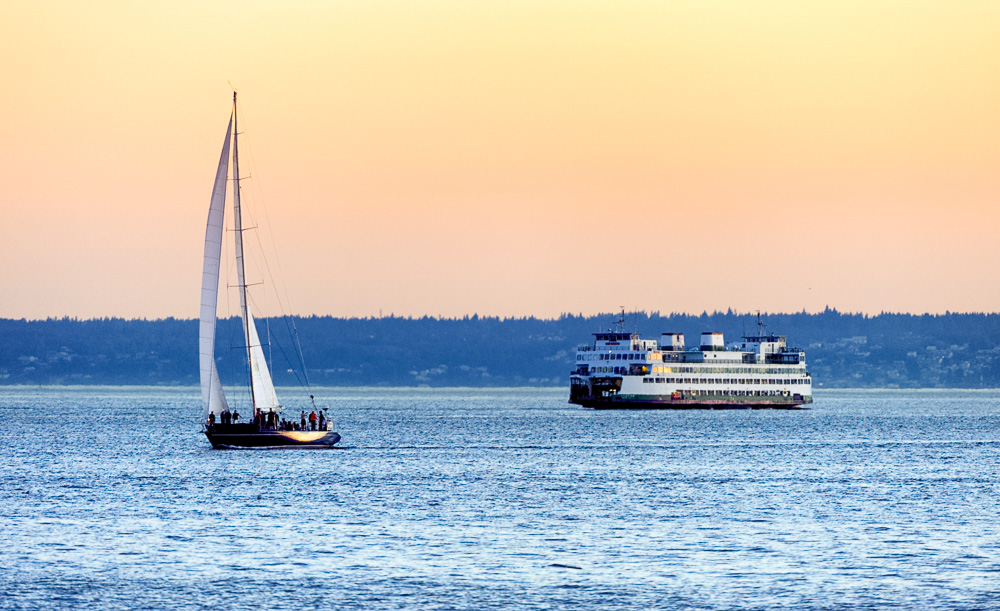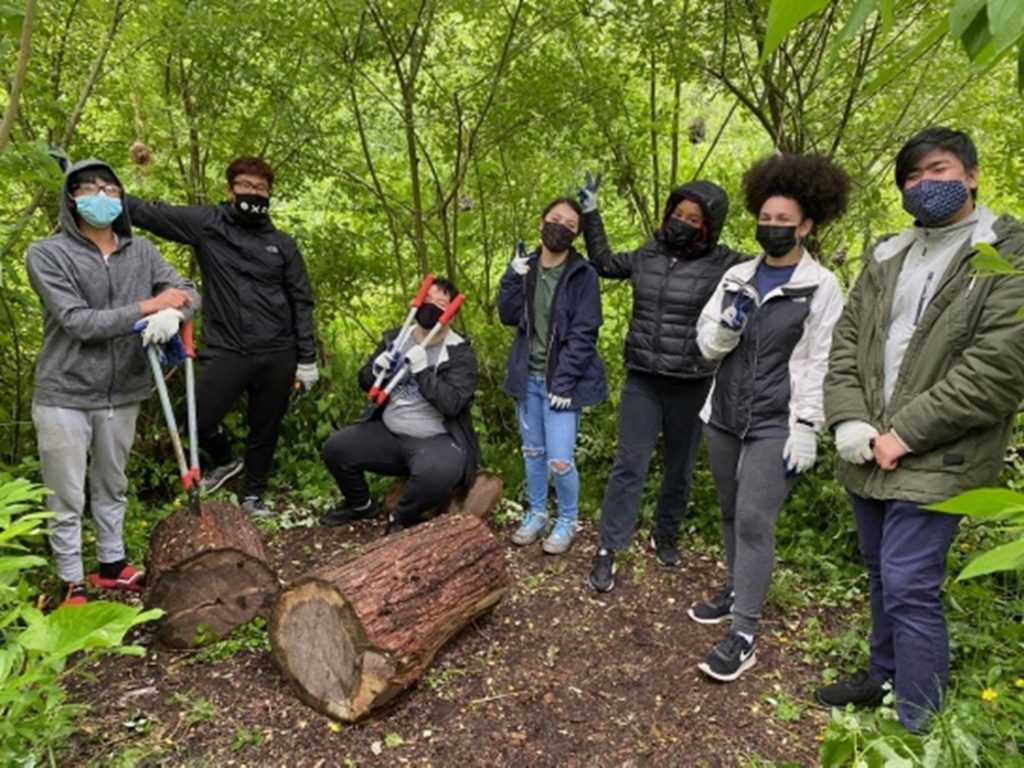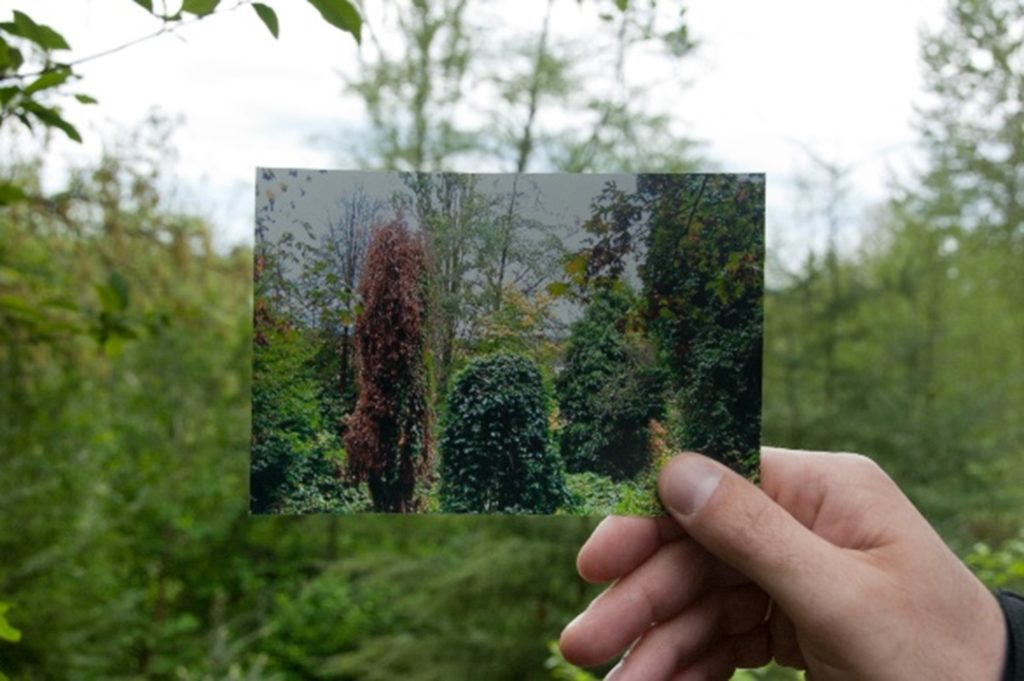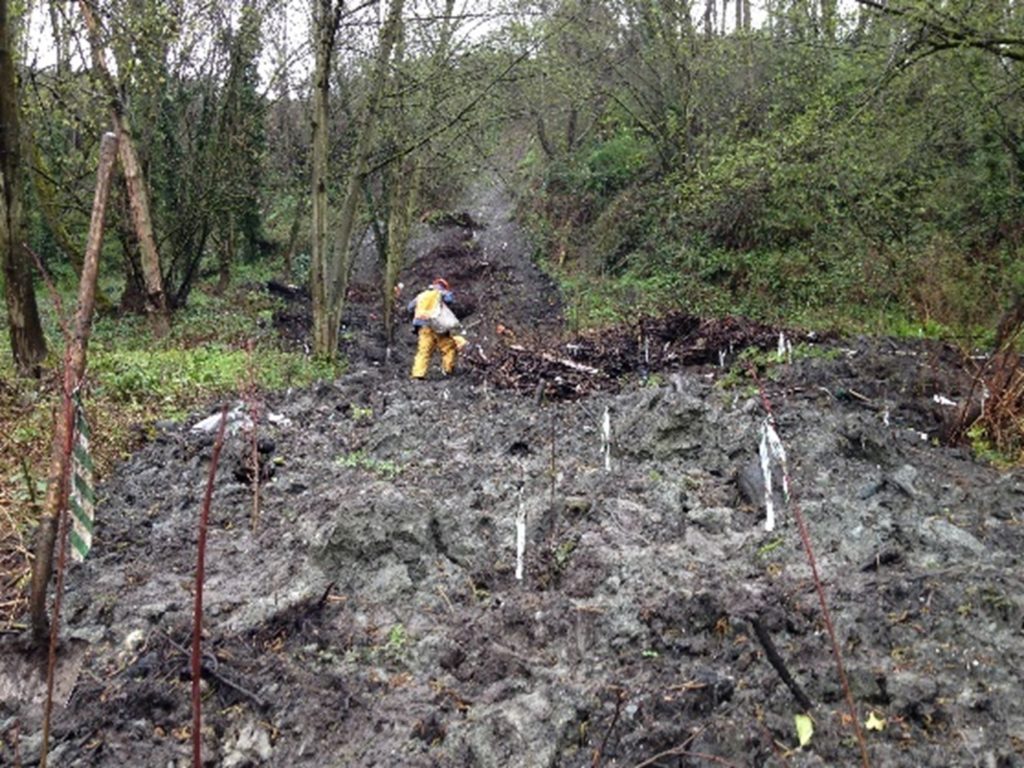
By Michael Yadrick, Lisa Ciecko, and Todd Burley
People have always had a relationship with Seattle’s forests, although it has shifted over time. This past year, with the COVID-19 pandemic and resulting social isolation, has underscored how essential the 2,754 acres of natural areas in Seattle are to our health and well-being.
Historically, the area now known as Seattle was primarily covered in old growth forests dominated by Douglas fir and Western red cedar. Coastal Salish people lived with and from these ecosystems of abundance until colonialism commodified trees and land and excluded indigenous people – the Duwamish, Suquamish, Stillaguamish, and Muckleshoot – from their homes. The forests were logged and the land was developed. A few forests were preserved by the nascent City of Seattle in places such as Seward Park and Schmidt’s Park. Other areas that were too steep to develop or otherwise were left alone and spontaneously regenerated, leading to forests of Big Leaf Maple and Red Alder as well as invasive plants such as English Ivy and Himalayan Blackberry.
In 1994 community activists, students, and nonprofit groups created the Green Seattle Partnership (GSP). This innovative partnership program was originally inspired to restore 2,500 acres of urban forests in close to 250 parks in collaboration with the community by 2025. Thanks to the partnership of over 60+ organizations, 400+ Forest Stewards, and thousands of volunteers, GSP has begun the long process of restoration of close to 2000 acres of urban forest in Seattle. These volunteers have contributed over 1 million volunteer hours, equating to $28 million in value. City partners have contributed $4.6 million to support the effort, which extends the City’s $31 million in funding since 2005. GSP is seen as a successful example of urban forest restoration and has been replicated regionally around Puget Sound as the Green Cities Network. And now 15 years later we are asking ourselves for whom and by whom are we restoring the city’s forests.

Although the forested parklands are found across the city, a legacy of racist policies and neglect has led to unevenly distributed urban forest patches found across our neighborhoods. There are still disparities in access to the forested natural areas based on income, race, ethnicity, age, gender, and ability. Initially, forest restoration work was prioritized based upon proximity to existing volunteer work and salmon-bearing streams. As we become familiar with our neighbors, we are now working to build intentional relationships with BIPOC organizations to partner in new restoration while also prioritizing equity and social justice as a guide. We carry on this effort keeping in mind environmental justice in a rapidly growing city historically segregated by race while also supporting climate change resilience and adaptation.
These last 16 years were also a time to learn about what works in urban forest restoration. SPR has encountered challenges that are adjusting how we continue this work in the future. Steep slopes account for 49% of the remaining forest to be restored and present challenges for safety, including landslide risk. Labor costs have increased, new noxious weeds have entered our forests (many with human health or ecological impacts) triggering regulatory requirements that place their management at the front of the line. Add to this an urgency to respond with care to urban heat impacts. In addition, SPR added 254 more acres of urban forests to manage. All combined, the number of stresses on our urban forests have increased significantly since 2005.
Seattle Parks and Recreation continues to be committed to restoring the habitat in our urban forests and increasing access to these healing natural areas. We recognize now, however, that it will take longer and require new ways to restore and maintain these ecosystems beyond the 20-year benchmark. The Green Seattle Partnership released a Strategic Plan Update in 2017, and has embarked on a revisioning process, foregrounding equity, to imagine a path forward to a sustainable management plan as we collectively rebuild our relationship with Seattle’s forests. As we consider what the next 15 years will look like, the GSP vision remains solid: a healthy, livable city with a sustainable urban forest.
To learn more, visit www.greenseattle.org to sign up for the monthly newsletter, learn about paid youth opportunities, and join us at an event in your neighborhood.

